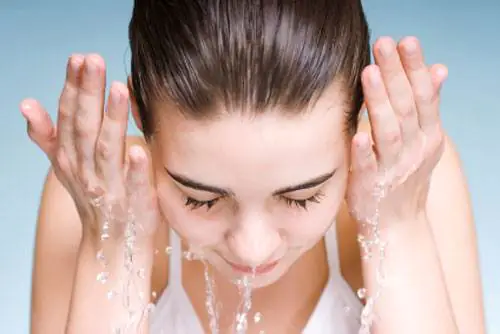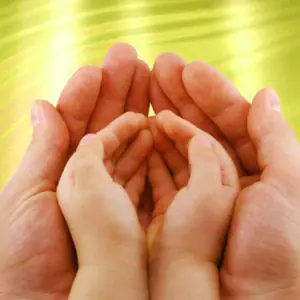There are many factors to consider when dealing with teenage skin. The biggest concern for teenagers is acne (pimples). With the advent of puberty, most teenagers begin to feel ashamed of their appearance, as acne begins to appear when hormonal levels change. If you are a cosmetologist, then you should treat their problems with special understanding and caution. Parents of teenagers often seek help in choosing a skin cleansing method. When working with teenagers, it is specialists who must inform parents about what can help solve their children's problems.

A cosmetologist must know about all methods of dermatological therapy, as well as all current medications that have been used previously and are currently used. Certain medications may be contraindicated or incompatible with certain therapies. If you are not confident in the good result of your work, it is better that your parents consult with other doctors before starting treatment.
Internal factors of skin problems
When treating acne, a professional esthetician must consider many factors, such as heredity, digestive health, normal hormone production, and the patient's lifestyle.
A weak digestive system can be the real cause of many skin diseases, including acne. A malfunction in the digestive system can lead to intoxication of the body. Lack of hydrochloric acid, which is important in the digestive process, can lead to a weakened digestive system. Research has shown that some diseases, such as acne, are associated with decreased concentrations of hydrochloric acid.
Factors leading to a decrease in hydrochloric acid may be:
- Frequent caffeine consumption
- Antibiotics, as antibiotic use may contribute to biotin deficiency.
Lack of B vitamins
The skin is the largest organ of our body. Many toxins enter the tissues of the body and organs through the skin. Clinical studies have shown that a lack of vitamins A, B2, B3, B5, B6 and vitamin D deficiency can also contribute to the appearance of acne. Another cause of teenage skin problems may be a lack of minerals such as zinc and selenium.

When treating zinc deficiency, it is worth taking dietary supplements that include, in addition to zinc itself, vitamins A and D. Supplements of B vitamins, such as vitamin B5, B12, and others, will help strengthen the immune system and regulate the function of the sebaceous glands.
Insulin and teenage skin problems
Research has shown that there is a relationship between high sucrose intake and inflammation. If blood sugar levels rise quickly, insulin production begins, and insulin causes inflammation. A rapid increase in blood sugar can cause inflammation in the body and contribute to the appearance of skin diseases. The effect on the sebaceous glands leads to their inflammation and can lead to clogging of pores (as the production of fatty acids increases).
These fatty acids release cytokines, thereby causing pain. Nutritionally, vitamins such as B6 will help maintain blood glucose levels within normal limits, and vitamin B5 will help reduce pain. Of course you need to follow a low glycemic diet, give up white bread and sugar
Stress as a cause of skin problems
During the period of hormonal changes (puberty), stress has a direct and very serious effect on the sebaceous glands. Chronic stress increases the level of production of certain hormones, which, through enzymes, stimulate the production of lipids in the sebaceous gland. 
Teenage girls are more susceptible to acne, which is associated with the release of cortisol, insulin and androgens. Excessive androgen production in both men and women can cause many skin problems. Androgen depressants can be used to reduce sebum production, but they have serious side effects.
External factors
Acne may be the result of an “overproduction” of sebum produced from enlarged sebaceous glands. Another important cause of acne is the rapid growth of skin cells. When this happens, the sebum does not come out and becomes “trapped”; when this happens, harmful bacteria multiply within the hair follicle, pimples appear and pus forms. If left untreated, bacteria and sebum will increase and this can lead to more acne.
Allowing sebaceous follicles to separate, allowing healthy bacteria to thrive, helps reduce sebum production. An effective remedy that helps to exfoliate sebaceous follicles is salicylic acid, for example, as part of a professional salicylic acid mask.

Prevention and treatment of acne
The best treatment is not to “squeeze” pimples when they appear, but to prevent them from appearing at all. In adolescence, very often you can simply limit yourself to personal hygiene and the use of light local drying and anti-inflammatory ointments and creams and simple cosmetic procedures
In boys and girls from 12-13 years of age to 17-18 years of age (some longer), hormonal changes occur throughout the body, which affects all organs and tissues, including the skin, especially the face, back, front surface of the upper chest. In this regard, already at the age of 13 it is necessary to pay special attention to regular care of teenage skin of the face and other areas of the body.
p, blockquote 1,0,0,0,0 —>
p, blockquote 2,0,0,0,0 —>
The condition of the skin is significantly influenced by changes in the function of the sebaceous glands, the regulation of which is carried out mainly under the influence of sex hormones. In addition, it becomes very sensitive to the influence of physical and chemical environmental factors, to the nature of nutrition, the state of internal organs, especially the stomach and intestines, the nervous and immune systems, etc.
p, blockquote 3,0,0,0,0 —>
p, blockquote 4,0,0,0,0 —>
What you need to know for proper care
During adolescence, the activity of the sebaceous glands increases significantly. The skin of the face and chest becomes covered with excess fat, and a characteristic greasy sheen appears on them. The tendency to blockage of the excretory ducts of the sebaceous glands increases, single or multiple comedones and milia appear, which often become inflamed and fester, leaving behind traces in the form of cyanotic spots and scars.
p, blockquote 5,0,0,0,0 —>
Hormonal imbalance in adolescence often leads to the development of acne and its consequences in the form of aesthetic defects and psychological disorders in adolescents. It is impossible to completely avoid these inherent changes during adolescence. However, timely and proper regular care for teenage problem skin helps to survive a hormonal “surge” relatively successfully. It allows you to reduce the number of rashes, and, to a large extent, helps reduce the risk of complications in the form of inflammatory processes, including purulent, bluish spots and scars.
p, blockquote 6,0,0,0,0 —>
In order to properly care for teenage skin, you need to know its type. Not only the care program, but also the choice of cosmetic products depends on it. To determine your type, you need to have a general understanding of the main skin types and their main features:
p, blockquote 7,0,0,0,0 —>
Dry
p, blockquote 8,0,0,0,0 —>
It is quite thin, delicate, with a matte finish and small, almost invisible pores. Sebaceous secretion and sweating are reduced. Under the influence of cold, wind or sunlight, irritation and reddish spots easily appear on it. Often there are areas of fine-plate peeling, it seems tight, especially after washing. Dry skin quickly becomes rough and multiple small facial wrinkles appear on it very early, but quite rarely - elements of acne.
p, blockquote 9,0,0,0,0 —>
Fat
p, blockquote 10,0,1,0,0 —>
Is the exact opposite of dry. It is caused by excessive function of the sebaceous glands. This is manifested by a characteristic excess (greasy) shine all over the face, seborrhea, and enlarged skin pores. Sebum protects against the formation of early facial wrinkles and drying of the skin, but contributes to rapid contamination and the appearance of infiltrates that look like reddish dense spots, often painful on palpation.
p, blockquote 11,0,0,0,0 —>
There is also a tendency to the formation of comedones (blackheads), milia, sebaceous gland cysts (atheroma) and a tendency to inflammatory processes. Oily skin is usually rough, dense, with a grayish tint and an uneven surface. If you put a paper napkin to your face, there will be traces of oily areas on it.
p, blockquote 12,0,0,0,0 —>
p, blockquote 13,0,0,0,0 —>
Normal
p, blockquote 14,0,0,0,0 —>
It is quite rare. It is matte, of normal density and with barely noticeable pores in the central parts of the face, almost always fresh and clean, with a pinkish tint, the absence of blackheads and the feeling of “tightening” after washing, and its surface is smooth and without visible areas of peeling. Slight shine can only be in the forehead, nose and chin area.
p, blockquote 15,0,0,0,0 —>
Areas of irritation and inflammation appear very rarely. The condition of the skin surface does not change under the influence of changes in weather conditions or phases of the menstrual cycle. All this indicates uniform and adequate blood microcirculation, good hydration, normal content and uniform distribution of fatty lubricant. The skin feels firm and elastic to the touch.
p, blockquote 16,0,0,0,0 —>
Mixed or combined
p, blockquote 17,0,0,0,0 —>
The most common. The largest number of sebaceous glands are located in the area of the forehead, nose, and chin. These areas have the greatest porosity and fat content. This entire zone, together with the forehead and nose, forms the so-called “T” - a zone that is predominantly fatty. In the temporal and cheek areas, the skin is thin and smooth, dry, the pores are almost invisible.
p, blockquote 18,0,0,0,0 —>
If the difference between the “T” zone, that is, predominantly oily, and the remaining areas of the predominantly dry type is insignificant, then such skin is classified as normal type, and if there is a significant difference between “oily” and “dry” areas, it is classified as combined. In this case, care for the “T”-shaped zone is carried out as for an oily area, and in the cheek and temporal areas, care products for dry skin types are used.
p, blockquote 19,0,0,0,0 —>
In doubtful cases and in order to correctly determine your type, you can use a simple fat content test. To do this, you need to wash your face in the morning using mild cleansers, such as gel or foam, then dry your face with a napkin or towel. You should not apply any cosmetics, as your face must be absolutely clean.
p, blockquote 20,0,0,0,0 —>
After 2 hours, apply a thin paper napkin and lightly press it with your palm in the forehead, cheeks, nose and chin. After this, the obtained results of the fat content test are assessed using the traces remaining on the napkin:
p, blockquote 21,1,0,0,0 —>
- The test is considered negative if there are no greasy stains on the napkin, which is typical for the dry type;
- positive test - greasy stains on the napkin where it touches the frontal area, nose and chin, that is, in the “T” zone; if the spots are slightly expressed, the skin belongs to the normal type, if they are intense - to the combined type;
- The test is considered sharply positive if five greasy spots are “imprinted” on the paper, that is, not only in the forehead, nose and chin, but also 2 spots in the cheek area; this sign is characteristic of the fatty type.
However, this test only reflects the characteristics of secretion from the sebaceous and sweat glands. At the same time, such an important indicator of the condition of the skin as its turgor, characterized by the degree of firmness, elasticity and fullness, is not taken into account.
p, blockquote 22,0,0,0,0 —>
p, blockquote 23,0,0,0,0 —>
When choosing a skin care product for a teenager, a test to determine skin turgor is no less important than the first one. It allows you to judge her condition more objectively and broadly. Additional testing consists of grasping a section of tissue with the thumb and forefinger (on the face - in the lateral sections under the cheekbone) and holding it for several (2-3) seconds, after which the turgor is assessed:
p, blockquote 24,0,0,0,0 —>
- excellent - if there is difficulty in forming a fold due to the “resistance” of the tissues;
- slightly reduced - the fold is relatively easy to form, but it immediately disappears after relaxing the fingers;
- significantly reduced - it is easy to form a fold with your fingers; after relaxing them, it does not straighten out immediately, and in some areas the skin forms folds on its own.
p, blockquote 25,0,0,0,0 —>
Step-by-step care measures and choice of cosmetics
The general principles of proper care during adolescence consist of three main stages:
p, blockquote 26,0,0,0,0 —>
- Cleansing.
- Toning.
- Hydration.
- Makeup.
Cleansing
p, blockquote 27,0,0,0,0 —>
It must be done twice during the day - in the morning and in the evening. In this case, it is best to use such delicate cosmetics as gels and foams without soap, alkaline and alcohol components. It is not recommended to use scrubs for problematic skin in adolescence, since the rough particles they contain can easily damage inflamed areas, worsening their condition.
p, blockquote 28,0,0,0,0 —>
Toning
p, blockquote 29,0,0,0,0 —>
It is carried out by wiping with tonic after washing. Tonic is necessary due to the fact that washing with tap water often provokes an exacerbation of acne. With the help of tonic, the remaining water and products that were used for washing are easily removed. In addition, the active ingredients contained in it have an anti-inflammatory effect.
p, blockquote 30,0,0,0,0 —>
Hydration
p, blockquote 31,0,0,1,0 —>
Any type of skin needs it, regardless of oiliness. To do this, you need to choose soft products designed specifically for teenage skin.
p, blockquote 32,0,0,0,0 —>
Cosmetics for the care of problem skin of teenagers
p, blockquote 33,0,0,0,0 —>
Makeup
p, blockquote 34,0,0,0,0 —>
Many teenage girls use decorative cosmetics quite early. Very often this is motivated by the desire to disguise existing rashes or enlarged pores. However, it is always necessary to remember that applying a thick layer of foundation will not only not mask acne, but, on the contrary, will contribute to an even greater development of the inflammatory process and even suppuration.
p, blockquote 35,0,0,0,0 —>
You should try to use decorative cosmetics in a minimal amount or avoid using them altogether. In order to disguise problem areas, it is better to use corrective pencils or loose powders designed specifically for teenagers. In addition, you should never forget about evening make-up removal.
p, blockquote 36,0,0,0,0 —>
With a normal type, you can rinse your face with boiled water with the addition of baking soda, and use soap no more than 3 times a week, and only “Children’s” soap. Washing can be replaced with a cleansing lotion with a very low alcohol content.
p, blockquote 37,0,0,0,0 —>
If you have a dry or normal type of skin, and there is no oily sheen in the “T” zone in the morning, simply washing with plain water and drying with a towel or napkin is sufficient. In the evening, you need to cleanse your face with a soft gel or foam for normal to dry skin. When staying in hot climates or at sea for a long time, it is necessary to use ultraviolet filters. If a feeling of tightness appears after washing, you can use mineral, boiled or clean drinking water.
p, blockquote 38,0,0,0,0 —>
Caring for teenage facial skin at home is carried out according to the principles described above using warm herbal infusions for rinsing, for example, string, calendula, chamomile, as well as fresh cucumber (for oily skin) or cucumber lotion (yarrow grass and large cucumber pulp, mixed with 1 glass of vodka and infused for 4 days), etc. Instead of cucumber, for example, you can use orange or lemon.
p, blockquote 39,0,0,0,0 —>
If a teenager has problem skin, you can use an anti-inflammatory lotion, a camouflage pencil with an antibacterial effect, as well as a roller or acne cream. Combination skin can be treated with milk, and oily skin can be treated 2 times a day with a cleansing gel specifically for oily skin types. In addition, you can use 2% salicylic acid, lotions and tonics designed for problem skin and preventing inflammatory processes, as well as helping to normalize the secretion of the sebaceous glands. For problem skin, cosmetic cleansing can be used from salon procedures, but not more than 1 time within 1 month.
p, blockquote 40,0,0,0,0 —>
In all cases, especially if there are problems, it is advisable for a teenager to consult a cosmetologist or dermatologist.
p, blockquote 41,0,0,0,0 —> p, blockquote 42,0,0,0,1 —>
The outer covering of the body, the skin, is one of the largest human organs. It performs a number of important functions: protection from the negative influence of environmental factors, maintains and regulates body temperature, and takes part in the processes of metabolism and respiration.
In the process of growth and development, the child learns about the world thanks to the sensitive receptors of the skin (tactile, pain, temperature). That is why disruptions in functioning affect the functioning of the entire organism as a whole. And vice versa: various pathological manifestations, in particular, dry skin on a child’s hands, can be signs of disease.
Features of children's skin

Regardless of the location of the body area, the skin of a child, like an adult, consists of three layers:
- epidermis - outer, very thin and actively growing layer;
- dermis – located under the outer layer;
- subcutaneous fat is especially developed in newborns and begins to form at the 5th month of intrauterine development.
Epidermis is the upper (horny) layer. In newborns it is very thin, but prone to rapid division and regeneration. Due to its immaturity, the outer layer is easily wounded and prone to penetration and spread of infection.
The middle layer, the skin itself, contains sebaceous and sweat glands, which are already quite well developed in utero and produce the lubricant that coats the baby at birth. The dermis also contains a well-developed network of blood vessels that ensure the function of skin respiration and metabolism.
The child’s dermis contains cells responsible for immunity to allergens, so manifestations of allergic reactions occur on the skin.
The subcutaneous fat layer is well developed in newborns, but differs in its structure in different parts of the body. It is the fat layer that ensures high heat production in children.
Why does the skin on my child's hands peel?

The baby's dermis developed in utero surrounded by fluid, and after birth it undergoes adaptation processes to new environmental conditions.
In the first months of life, both the color of the skin and its condition change. Rashes, irritation, and sometimes peeling and micro cracks may appear. These processes are physiological.
But if they are very pronounced and do not go away for a long time, this may be a manifestation of the negative influence of external factors:
- Reaction from the dermis to food. Allergic reactions in children of the first year of life manifest themselves in the form of rashes or peeling. This can happen both during breastfeeding and when adding complementary foods from new types of foods.
- Reaction to household chemicals. Dryness and flaking of the skin can be caused by detergent for washing children's clothes or shampoos and bathing gels. Also children's cosmetics: creams, powders are of poor quality or made with the addition of flavors, preservatives or other various additives.
- Chlorinated water. Frequent bathing in water with a high content of chlorine, visiting a swimming pool or washing children's clothes in such water provokes irritation and peeling.
- Excess ultraviolet rays. Long exposure to the sun without protective equipment causes loss of moisture from the upper layers of the dermis and subsequently causes dryness and flaking.
- Lack of vitamins. Most often it appears after illnesses, with reduced immunity and a lack of vitamins in food in the spring.
- Poor quality clothes. Clothing made from synthetic fibers can cause irritation and dryness. This also applies to children's toys, bedding and blankets.
- Pathological processes of internal organs. Dry skin can be a warning symptom of metabolic disorders and chronic diseases.
- Cold season. With a sharp change in temperature or exposure to cold, the top layer of the baby’s hands loses moisture and elasticity, which leads to peeling.
In cases where dryness and flaking continues for a long period, this can lead to the appearance of cracks in the hands. They can be quite painful, as a result the child becomes restless and moody. And eliminating such consequences and treating cracks is more difficult than preventing their appearance.
How to eliminate dry skin on a child's hands

With the baby’s physiological adaptation to environmental conditions, when dry skin is not pronounced, you can do without consulting a specialist and eliminate the dryness with the help of baby cream or oil.
If the manifestations do not disappear for a long period or often appear and are complicated by cracks, in this case you cannot do without an examination by a pediatrician.
Treatment directly depends on the causes of skin peeling. After identifying the causes, you can decide on treatment methods.
Allergic reactions
When diagnosing an allergic reaction, the doctor prescribes a series of allergy tests to determine the allergen. Identified food products that are allergenic to the child’s body should be excluded. In some cases, additional drug treatment with antiallergic drugs and ointments is necessary.
Dry skin additionally needs care and hydration. If cracks are visible on your hands, they must be treated with a gentle disinfectant solution. Affected areas can become additional gates for infection to enter the body. And the structural features of children's skin cannot prevent or stop the spread of infection.
Temperature
Hands need additional hydration during the winter season. If there are sudden changes in temperature indoors and outdoors during a walk, adaptation does not have time due to imperfect thermal regulation of the skin. And dry indoor air during the heating season aggravates the manifestations of dehydration.
In the summer, the baby must be additionally protected from the aggressive influence of ultraviolet radiation. It is better to use a sunscreen cream intended for early childhood.
Drinking regime
The child must receive a sufficient amount of fluid to maintain water-salt balance and metabolic processes in the body.
Natural fabrics
Your baby's synthetic clothes should be replaced with items made from natural fibers: cotton, linen or bamboo. This also applies to toys and bedding and blankets.
Detergents
When washing with soap or powder, children's clothes need additional rinsing until the smell of the detergent disappears. To wash children's clothing, it is permissible to use hypoallergenic products adapted for children's age.
Vitamins
After suffering an infectious disease, taking medications, as well as in the spring, the baby needs additional vitamin supplements, dosed strictly according to age.
Traditional methods for treating dry hand skin

Traditional methods of combating dry hands can be used in combination with drug therapy after consultation with a pediatrician.
An excellent moisturizer is oil. It softens the dermis and prevents moisture from evaporating. For children's hands, you can use massage oil intended for early childhood, or olive, flaxseed, almond, and wheat germ oil.
If there are no visible wounds or cracks on the skin, the oil can be rubbed in with light massage movements.
You should not use active concentrated ointments and creams for moisturizing. The active ingredient of the ointment is quickly absorbed through the thin baby skin into the blood, and can also cause irritation and aggravate skin manifestations.
As a healing and anti-inflammatory agent, you can use decoctions of herbs: chamomile, plantain and sage. Cool to room temperature and make hand baths. You can add a solution of vitamins A and E to the decoction. This mixture is also added to the bath when bathing.



